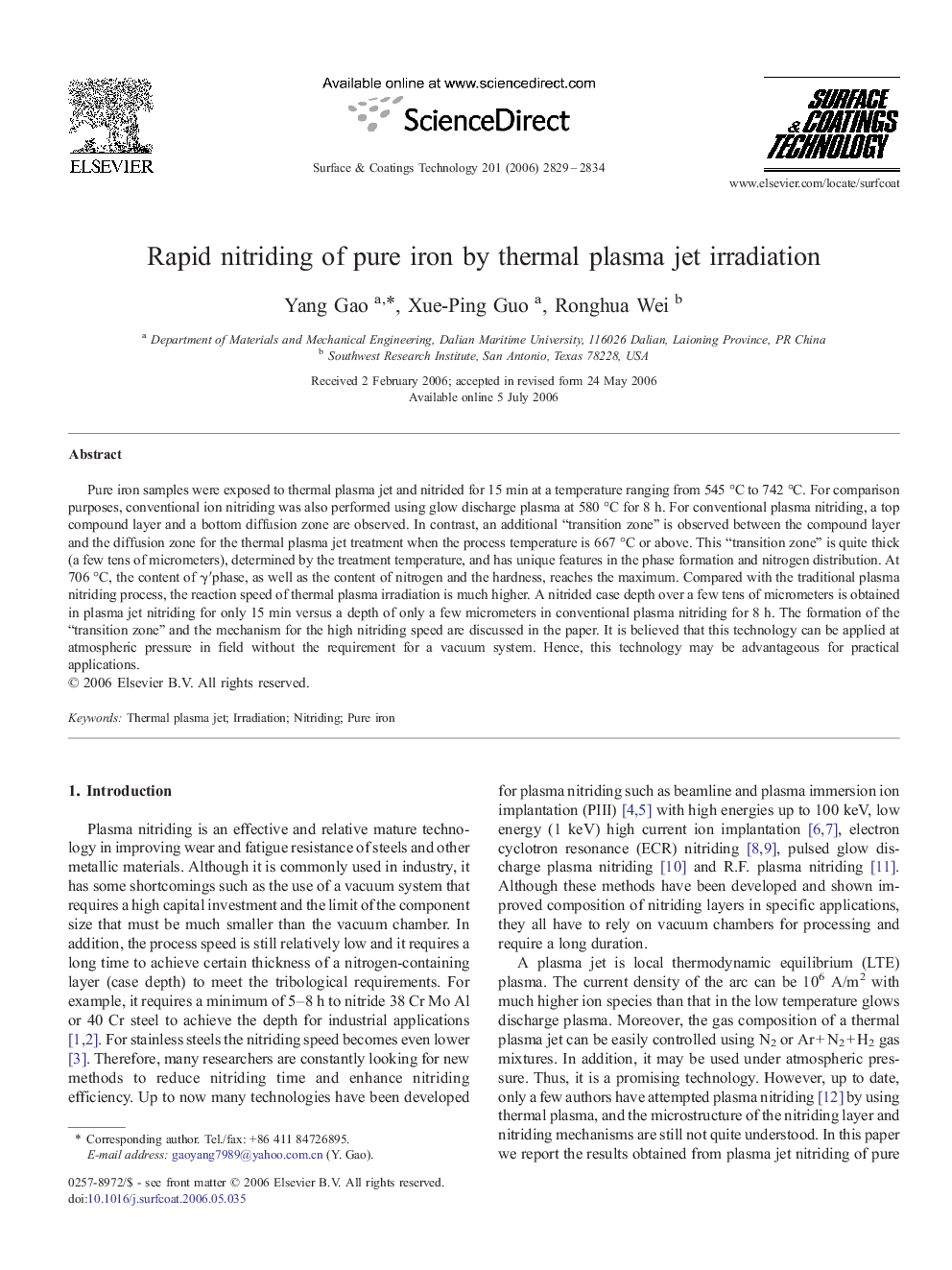| Article ID | Journal | Published Year | Pages | File Type |
|---|---|---|---|---|
| 1663400 | Surface and Coatings Technology | 2006 | 6 Pages |
Pure iron samples were exposed to thermal plasma jet and nitrided for 15 min at a temperature ranging from 545 °C to 742 °C. For comparison purposes, conventional ion nitriding was also performed using glow discharge plasma at 580 °C for 8 h. For conventional plasma nitriding, a top compound layer and a bottom diffusion zone are observed. In contrast, an additional “transition zone” is observed between the compound layer and the diffusion zone for the thermal plasma jet treatment when the process temperature is 667 °C or above. This “transition zone” is quite thick (a few tens of micrometers), determined by the treatment temperature, and has unique features in the phase formation and nitrogen distribution. At 706 °C, the content of γ′phase, as well as the content of nitrogen and the hardness, reaches the maximum. Compared with the traditional plasma nitriding process, the reaction speed of thermal plasma irradiation is much higher. A nitrided case depth over a few tens of micrometers is obtained in plasma jet nitriding for only 15 min versus a depth of only a few micrometers in conventional plasma nitriding for 8 h. The formation of the “transition zone” and the mechanism for the high nitriding speed are discussed in the paper. It is believed that this technology can be applied at atmospheric pressure in field without the requirement for a vacuum system. Hence, this technology may be advantageous for practical applications.
